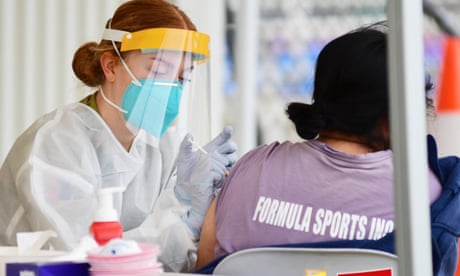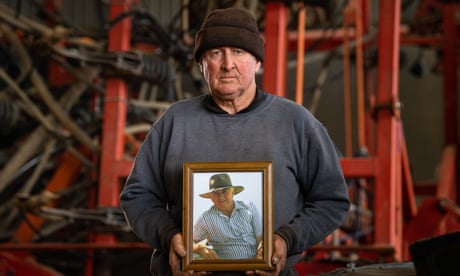Extract from The Guardian
Rural communities’ lack of access to health services and staffing shortages drive a $4bn deficit in spending.

The National Rural Health Alliance estimates the federal government is saving $4bn in rural areas through Medicare and the Pharmaceutical Benefits Scheme because of staffing shortages and lack of access to health services.
The alliance has called on the federal government to transfer the funds to establish a new model of healthcare for rural communities.
It says rural populations’ lack of access to health services, due predominantly to the difficulty in attracting and retaining a rural health workforce, is driving the deficit in health expenditure.
Gabrielle O’Kane, the CEO of the alliance, says the Rural Area Community Controlled Health Organisations (RACCHOs) is a place-based model of healthcare designed to “attract more health professionals to rural areas”.

“Models of care which work for metropolitan areas do not work in rural Australia,” she says.
The RACCHO model would be underpinned by a block of funding from combined commonwealth, state and territory and local government sources to employ a multidisciplinary team of healthcare professionals including general practitioners, nurses and midwives, and allied health professionals such as physiotherapists, podiatrists and psychologists.
The model takes a similar approach to the National Aboriginal Community Controlled Health Organisation (NACCHO).
The proposal has been included in the Report to Government from the Primary Health Reform Steering Group for consideration in the Primary Health Care 10 Year Plan.
O’Kane’s comments come as experts express serious concerns that smaller rural communities are lagging behind on Covid vaccination rates – exacerbated by staffing levels – as the New South Wales government prepares to ease lockdown rules when the state reaches a 70% double-dose rate.
O’Kane says that rural Australia’s lower levels of income and education are already associated with poorer health outcomes, but limited access to healthcare means when people do get unwell they do not have the ability to see a professional as frequently, and sometimes not at all.
Consequently, she says many only ended up at the emergency department when their condition has already deteriorated, although the problem could have been addressed earlier and more effectively by a general practitioner.
O’Kane says the deterrent for many doctors to set up a practice in rural Australia is being professionally isolated from other colleagues, and the fact that rural practices are not as profitable as in big cities because there are not the same number of patients.
Dr Duncan McKinnon, a GP in Bega in south-east NSW, says “it is really difficult to run a general practice ethically when you’re in a rural community and you’re struggling to recruit staff and the patients themselves are struggling to make ends meet”.
The Medicare rebate is half of what the Australian Medical Association says doctors should be paid, yet McKinnon says very few rural GPs charge their patients the gap.
“With a RACCHO the health professionals themselves can be employed with a guaranteed income and already set up with a multidisciplinary team that provides a range of services,” O’Kane says.
McKinnon welcomes the RACCHO model, which he says will “encourage team-based care and get away from the fee for service model”.
The RACCHO model is designed to be adaptable to suit the needs and circumstances of each community and the current model for rural health delivery in each state.
The alliance says practices such as Alpine Health in Bright, Victoria, which has a multipurpose service (MPS) model, has similar aspects to the RACCHO model being proposed.

Nick Shaw, the CEO of Alpine Health, says that with their model they “work strongly and closely with communities to understand their health needs and make sure we can configure a service and workforce response that meets local need”.
Shaw says that aged care and mental health services are two areas that Alpine Health have geared their service profile toward in order to meet the community need.
“The health for rural communities does improve when it’s place-based” as the people not only have greater access locally to the health services they need, but there is also greater awareness and an improved willingness for people to seek health services, Shaw says.
However, Shaw says that multipurpose services like his are not available in all rural and remote communities, but there is increasing recognition that there is value in the RACCHO approach.
Boe Rambaldini, a Bundjalung man and the director of the Poche Centre for Indigenous Health at the University of Sydney, says that while the government is nowhere near closing the gap between non-Indigenous and Indigneous health outcomes, he has high praise for the NACCHO model.
“They’re the frontline and they’re so important, they’re the ones really making a difference, given their position in society they’re punching above their weight and delivering the goods.”
NACCHO states that “studies have shown that Aboriginal controlled health services are 23% better at attracting and retaining Aboriginal clients than mainstream providers”.
Rambaldini says Aboriginal doctors are part of the service but he also praises the non-Aboriginal practitioners who he says have a genuine commitment to Indigenous health.
“They know how to build up a strong trusting relationship with the community, and because of that the doors open to them to find out what the holistic health needs are of those people and their community.”
McKinnon says that when it comes to rural communities, the implementation of a RACCHO would have to be sensitive not to have an unfair competitive advantage over any private health services already provided in an area, but that in a town like Bombala that has just seen its only GP practice shut, the model would be ideal.

No comments:
Post a Comment